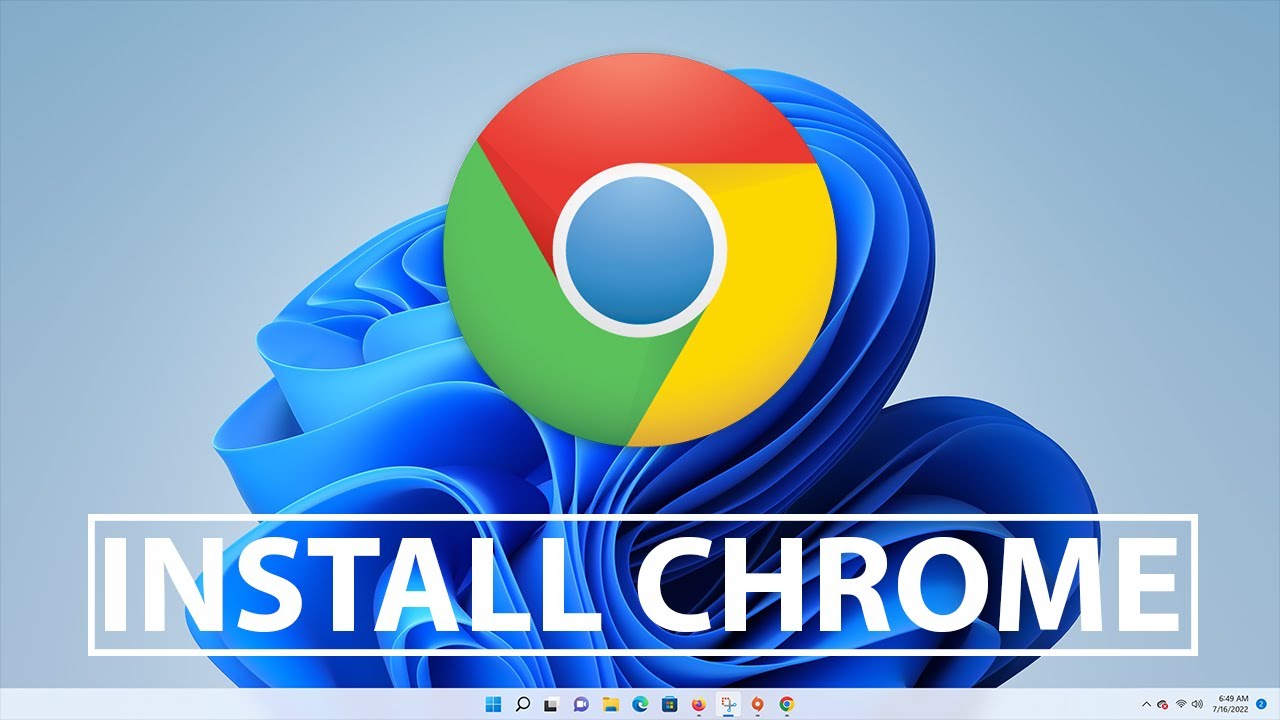Why Is Your Download Speed Slow in Chrome?
Slow download speeds can be frustrating, especially when you’re eagerly waiting for a file to finish downloading. If you’re experiencing sluggish download speeds in Google Chrome, there could be a few reasons for this. Let’s explore some common culprits:
Firstly, check your internet connection. Slow download speeds may be a result of a poor or unstable internet connection. Conduct a speed test to verify your connection speed. if it’s significantly lower than expected, contact your internet service provider to address the issue.
Another factor that can affect download speeds is a cluttered cache and cookies. Over time, these can accumulate and impact browser performance. Clearing your cache and cookies regularly can improve download speed.
Chrome extensions can also contribute to slow download speeds. Some extensions may consume a significant amount of resources, causing Chrome to slow down. Try disabling unnecessary extensions to see if it improves your download speed.
Background apps running on Chrome can also hinder download speeds. These apps consume system resources and network bandwidth, impacting Chrome’s performance. Disable any unnecessary background apps and see if it improves your download speed.
Chrome has a feature called parallel downloading, which allows a file to be split into multiple pieces and downloaded simultaneously for faster speeds. Ensure this feature is enabled in Chrome settings to optimize your download speed.
Additionally, Chrome has experimental features that can enhance download speed. Access the Chrome Experiments page, search for “download” and enable any relevant experiments to see if they improve your download speed.
Using a download manager extension is another option. These extensions optimize the download process and offer more control over your downloads, potentially leading to faster speeds.
Your antivirus software may also be slowing down your download speeds. Temporarily disable your antivirus program and check if it affects the download speed. If it does, consider adjusting your antivirus settings or using a different antivirus program.
Review your Chrome settings for downloads. Ensure that Chrome is configured to download files to a location with sufficient storage space and consider adjusting the download behavior settings to better suit your needs.
Lastly, using a virtual private network (VPN) can potentially improve download speeds. A VPN can bypass certain restrictions and optimize your connection, resulting in faster downloads.
Regularly updating your Chrome browser is essential. Chrome updates often include bug fixes and performance improvements, which can positively impact your download speed.
By considering these factors and implementing the suggested solutions, you can troubleshoot and improve your download speed in Google Chrome. Keep experimenting with different techniques until you find the best combination for optimal performance.
Check Your Internet Connection
When experiencing slow download speeds in Google Chrome, the first step is to check your internet connection. A poor or unstable internet connection can significantly impact download speeds. Here are a few steps to diagnose and address any potential issues:
1. Conduct a speed test: Use an online speed test tool to measure your internet connection’s download and upload speeds. Compare the results to the speeds promised by your internet service provider. If there is a significant difference, it may indicate an issue with your connection.
2. Restart your router/modem: Sometimes, simply restarting your router or modem can help resolve connection issues. Power them off, wait for a few seconds, and then power them back on. This process can clear any temporary glitches and improve connectivity.
3. Wired vs. wireless: If you are using a wireless connection, try connecting your device directly to the modem/router using an ethernet cable. This eliminates any potential interference from the wireless signal and provides a more stable and faster connection.
4. Check for hardware issues: Ensure that all cables and connections are secure and not damaged. Faulty cables or loose connections can lead to a weak or unstable internet connection. Consider replacing any damaged cables to improve performance.
5. Position your router properly: The placement of your router can impact the strength and stability of your Wi-Fi signal. Make sure it is placed in a central location and away from obstacles like walls or other electronic devices that can interfere with the signal. Additionally, avoid placing it near sources of interference, such as microwaves or cordless phones.
6. Limit network usage: If there are multiple devices connected to your network, they may be competing for bandwidth, which can result in slower download speeds. Disconnect any unnecessary devices and minimize internet usage by other devices while you are downloading files.
7. Contact your internet service provider: If none of the above steps improve your download speed, it is recommended to contact your internet service provider. They can perform diagnostic tests on their end to identify any issues and provide further assistance in resolving the problem.
By following these steps and addressing any internet connection issues, you can potentially improve your download speeds in Google Chrome. Remember, a stable and reliable internet connection is crucial for optimal browsing and downloading experiences.
Clear Cache and Cookies
Clearing your cache and cookies is a simple yet effective solution to improve download speed in Google Chrome. Over time, these temporary files can accumulate and negatively impact browser performance. Here’s how to clear your cache and cookies:
1. Access the Clear Browsing Data window: Press Ctrl+Shift+Delete (Windows) or Command+Shift+Delete (Mac) to open the Clear Browsing Data window in Chrome.
2. Choose the time range: Select the time range for which you want to clear the cache and cookies. If you want to clear everything, choose “All time.”
3. Select the items to clear: Ensure that the checkboxes for “Cached images and files” and “Cookies and other site data” are selected. You can also choose to clear other items, but these are the most relevant for improving download speed.
4. Click “Clear data”: Once you have selected the appropriate options, click the “Clear data” button to initiate the clearing process. Depending on the amount of data to be cleared, it may take a few moments.
5. Restart Chrome: After the clearing process is complete, close and reopen Chrome to allow the changes to take effect.
Clearing your cache and cookies removes old and unnecessary data, freeing up space and improving Chrome’s performance. It can also resolve issues related to corrupted or outdated data that may be affecting download speeds. However, keep in mind that clearing your cookies will log you out of websites and may remove saved preferences, so you may need to re-enter login information for certain sites.
It is recommended to clear your cache and cookies regularly, especially if you frequently download files or notice a decline in browser performance. Some users may choose to automate this process by using browser extensions or plugins that clear cache and cookies periodically.
By regularly clearing your cache and cookies, you can ensure that Chrome is running smoothly and efficiently, leading to faster download speeds and a better overall browsing experience.
Disable Chrome Extensions
Chrome extensions can be incredibly useful for enhancing your browsing experience, but they can also contribute to slow download speeds. Some extensions consume a significant amount of system resources and may negatively impact Chrome’s performance. Disabling unnecessary extensions can help improve your download speed. Here’s how to disable Chrome extensions:
1. Open the Extensions tab: Click on the three-dot menu in the top right corner of Chrome and select “More tools,” then click on “Extensions.”
2. Disable extensions: In the Extensions tab, you’ll see a list of all the extensions installed in Chrome. To disable an extension, simply toggle the switch next to it to the off position. You can also choose to remove the extension altogether by clicking on the “Remove” button, but it’s recommended to disable first to see if it improves your download speed.
3. Test download speed: After disabling an extension, try downloading a file and see if there is an improvement in the download speed. If the speed increases, it indicates that the disabled extension was contributing to the slow speeds.
4. Enable essential extensions: If you depend on certain extensions for your daily browsing, enable only the ones that are essential. Keep in mind that each enabled extension can potentially impact performance, so be selective and only enable those that you truly need.
5. Enable extensions selectively: If you want to identify which specific extension is causing the slowdown, enable extensions one by one and test the download speed after each activation. This will help pinpoint the culprit if there is one.
6. Remove unnecessary extensions: If you find that certain extensions are not essential or are consistently causing performance issues, consider removing them from Chrome altogether. To do this, click on the “Remove” button next to the extension in the Extensions tab.
Remember, disabling or removing extensions may impact the functionality and features they provide. Consider the trade-off between improved download speed and the features and convenience offered by each extension.
Regularly reviewing and managing your extensions can help optimize Chrome’s performance and improve your download speeds. It’s a good practice to periodically evaluate the extensions you have installed and remove any that are no longer necessary or causing performance issues.
By selectively enabling or disabling extensions, you can find the right balance between functionality and performance, ultimately leading to faster and smoother download experiences in Google Chrome.
Disable Background Apps
Background apps running in Chrome can consume system resources and network bandwidth, which can contribute to slow download speeds. Disabling unnecessary background apps can help improve the performance of Chrome and enhance your download speed. Here’s how to disable background apps:
1. Open Chrome settings: Click on the three-dot menu in the top right corner of Chrome and select “Settings.”
2. Access the Extensions tab: In the sidebar on the left, click on “Extensions.”
3. Disable background apps: In the Extensions tab, you’ll see a list of all the extensions installed in Chrome. Find the one(s) that have “Allow access to file URLs” enabled. This indicates that the extension can run in the background. Toggle the switch next to the extension(s) to the off position to disable the background app functionality.
4. Test download speed: After disabling the background apps, try downloading a file and observe if there is an improvement in the download speed. Disabling background apps can free up system resources and enhance Chrome’s performance, potentially leading to faster downloads.
5. Enable necessary background apps: If you rely on certain extensions or apps that require background access, you can selectively enable them. However, keep in mind that enabling too many background apps can impact performance, so be cautious and only enable those that are essential.
6. Remove unnecessary extensions or apps: If you find that certain extensions or apps are not crucial or are causing consistent performance issues, consider removing them from Chrome altogether. To do this, go back to the Extensions tab and click on the “Remove” button next to the extension or app you want to remove.
By disabling unnecessary background apps, you can optimize Chrome’s performance and potentially improve your download speeds. However, be mindful that some apps may require background access for specific functionality, so ensure to strike a balance between performance and functionality based on your needs.
Regularly reviewing and managing your background apps can help enhance your overall browsing experience. Periodically evaluate the extensions and apps you have installed and disable or remove any that are not essential or causing performance issues.
By taking control of your background apps, you can optimize the performance of Google Chrome and enjoy faster and more efficient downloads.
Enable Parallel Downloading
Parallel downloading is a feature in Google Chrome that can significantly improve download speeds. It allows a file to be split into several parts and downloaded simultaneously, resulting in faster download times. Enabling parallel downloading in Chrome is a simple process. Here’s how you can do it:
1. Open Chrome and access the experimental features: Type “chrome://flags” in the address bar and press Enter. This will take you to the Chrome flags page where you can enable various experimental features.
2. Search for parallel downloading: Use the search bar on the Chrome flags page and type “parallel downloading.” This will filter the flags to display the relevant options.
3. Enable parallel downloading: Look for the flag named “Parallel downloading” and click on the drop-down menu next to it. Select “Enabled” to enable the parallel downloading feature in Chrome.
4. Relaunch Chrome: A prompt will appear at the bottom of the page, asking you to relaunch Chrome to apply the changes. Click on the “Relaunch” button to restart Chrome and allow the parallel downloading feature to take effect.
5. Test download speed: After enabling parallel downloading, try downloading a file and observe if there is a noticeable improvement in the download speed. Downloads should now be faster as Chrome simultaneously retrieves multiple parts of the file.
Keep in mind that parallel downloading may not always result in faster speeds, especially for smaller files or when downloading from slower servers. However, for larger files and faster servers, the impact can be significant.
While parallel downloading can enhance download speeds, it is important to note that it is an experimental feature. This means it may not be perfectly stable, and some websites or file types may not be compatible. If you experience any issues or instabilities after enabling parallel downloading, you can go back to the Chrome flags page and disable the feature.
Experimenting with experimental features like parallel downloading can be an effective way to optimize your Chrome browsing experience. Monitor the impact on your download speeds and adjust the settings based on your preferences and the types of files you frequently download.
By enabling parallel downloading in Chrome, you can harness the power of simultaneous downloading and potentially enjoy faster download speeds for files of all sizes.
Enable Experimental Features
Google Chrome offers a range of experimental features that can be enabled to enhance your browsing experience, including potential improvements to download speeds. These experimental features are not enabled by default as they are still under development or may have compatibility issues. However, if you’re willing to explore and experiment, enabling these features can lead to faster downloads. Here’s how you can enable experimental features in Chrome:
1. Access the Chrome flags page: Type “chrome://flags” in the address bar and hit Enter. This will take you to the Chrome flags page, where you can find and enable various experimental features.
2. Search for experimental features: Use the search bar on the Chrome flags page to find specific experimental features related to download speed improvements. You can try searching for terms like “download speed,” “network optimization,” or other relevant keywords.
3. Enable the experimental features: Once you’ve found an experimental feature related to download speed, click on the drop-down menu next to it and select “Enabled” to enable the feature.
4. Relaunch Chrome: After enabling the experimental feature(s), a prompt will appear at the bottom of the page, asking you to relaunch Chrome. Click on the “Relaunch” button to restart Chrome and allow the experimental features to take effect.
5. Test download speed: After relaunching Chrome, try downloading a file and observe if there is any noticeable improvement in the download speed. The enabled experimental features may help optimize network connections and enhance download performance.
It’s important to note that experimental features are still being tested, and they may not always work as expected. Some features may have compatibility issues or may not provide the desired improvement in download speed. If you encounter any problems after enabling an experimental feature, you can go back to the Chrome flags page and disable it.
Remember to regularly check the Chrome flags page for new experiments and features. Chrome continuously introduces and updates experimental features, so you can stay up-to-date with the latest optimizations and improvements.
Although enabling experimental features involves some risk, it can also provide exciting opportunities to explore new functionalities and potentially achieve faster download speeds. Experiment with different features, monitor their impact on download performance, and adjust the settings based on your individual preferences and requirements.
By enabling experimental features in Google Chrome, you can tap into the advancements being developed by Chrome’s engineers and potentially improve your download speeds and overall browsing experience.
Use a Download Manager Extension
If you frequently download files in Google Chrome and want more control over your downloads, using a download manager extension can be highly beneficial. These extensions optimize the download process, provide additional features, and can potentially lead to faster download speeds. Here’s how you can benefit from using a download manager extension:
1. Enhanced organization: Download manager extensions offer features that allow you to better organize and manage your downloaded files. You can categorize and prioritize downloads, create folders, and easily locate files based on date, type, or other parameters.
2. Resumable downloads: One of the key advantages of download manager extensions is the ability to resume interrupted downloads. If your download is interrupted due to a network issue or computer restart, the extension will pick up from where it left off, saving you time and bandwidth.
3. Multiple downloads simultaneously: Download managers often allow you to queue multiple downloads and download them simultaneously. This feature can significantly speed up the download process by utilizing maximum bandwidth capacity.
4. Segmented downloading: Some download manager extensions utilize segmented downloading, which means they split a large file into smaller segments and download them separately and concurrently. This can improve download speeds, especially for larger files.
5. Download scheduling: With download manager extensions, you can schedule your downloads to start at specific times, ensuring they do not interfere with your other activities. This can be helpful when you want to download large files during off-peak hours or when you have a limited internet connection.
6. Clipboard monitoring: Many download manager extensions monitor your clipboard for download links. When you copy a download link, the extension automatically captures it and prompts you to download directly, eliminating the need for manual input.
7. Virus scanning: Some download manager extensions include built-in antivirus scanning capabilities. They automatically scan files for potential threats before and after they are downloaded, ensuring your computer’s safety.
There are numerous download manager extensions available in the Chrome Web Store. Some popular options include DownThemAll, Chrono Download Manager, and Download Manager Plus. Make sure to read reviews and choose the extension that best suits your needs.
By using a download manager extension, you can take control of your downloads, improve organization, and potentially achieve faster download speeds. Experiment with different extensions to find the one that matches your requirements and enjoy a more efficient and streamlined downloading experience in Google Chrome.
Disable Antivirus Software
While antivirus software plays a vital role in protecting your computer from potential threats, it can occasionally interfere with your download speeds in Google Chrome. Antivirus programs often scan files in real-time as they are being downloaded, which can slow down the overall download process. If you’re experiencing slow download speeds, temporarily disabling your antivirus software can help pinpoint if it’s the cause. Here’s how you can disable antivirus software:
1. Locate the antivirus software icon: Look for the antivirus software icon in your system tray or taskbar, usually located in the lower right corner of your screen. It may be a small shield or a specific icon associated with your antivirus program.
2. Right-click the antivirus software icon: Right-click on the antivirus software icon to open the context menu.
3. Look for the option to disable or pause protection: In the context menu, you should see an option to disable or pause the antivirus protection. It may be labeled “Disable,” “Pause protection,” or similar. Click on this option.
4. Confirm the action: A confirmation prompt may appear asking you to confirm the deactivation of the antivirus software. Read the prompt carefully and click “Yes,” “Disable,” or “OK” to proceed with disabling the antivirus.
5. Test download speed: After disabling the antivirus software, try downloading a file in Google Chrome and observe if there is an improvement in the download speed. If the speed increases significantly, it indicates that the antivirus software was affecting the download speeds.
Remember, disabling your antivirus software temporarily means your computer is more vulnerable to potential security threats. It is crucial to re-enable the antivirus protection as soon as your download is complete or when you’re finished troubleshooting the slow download speed issue.
If you’re unsure how to disable your specific antivirus software or if the steps listed above don’t apply to your program, consult the software’s documentation or contact the antivirus provider’s support for guidance.
Disabling antivirus software should only be done momentarily for the purpose of troubleshooting. If you consistently experience slower download speeds due to the antivirus program, consider adjusting the program’s settings to minimize its impact or switch to a different antivirus software that is more resource-friendly.
By temporarily disabling your antivirus software, you can determine if it is the cause of slow download speeds. However, always prioritize the security of your computer and ensure the antivirus protection is reactivated promptly after you have identified and resolved the issue.
Check Chrome Settings for Downloads
Google Chrome offers various settings that can be customized to optimize your download experience. Checking and adjusting these settings can help troubleshoot and potentially improve download speeds. Here’s how to check Chrome settings for downloads:
1. Open Chrome settings: Click on the three-dot menu in the top right corner of Chrome and select “Settings.”
2. Scroll down and select “Advanced”: Scroll down in the Settings tab until you see the “Advanced” section. Click on it to expand the advanced settings options.
3. Locate the “Downloads” section: Under the “Privacy and security” category, look for the “Downloads” section. Click on it to access the specific settings related to downloads.
4. Review the download location: Ensure that the download location is set to a location with sufficient storage space. If the default location is not suitable for your needs, click on “Change” and select a different folder or directory where you want your downloads to be saved.
5. Consider adjusting the download behavior: Chrome offers options for how to handle different types of downloads. For example, you can choose to ask where to save each file before downloading or enable the option to automatically open certain file types after downloading. Evaluate these settings and adjust them according to your preferences.
6. Enable “Ask where to save each file before downloading”: Enabling this setting ensures that Chrome asks for confirmation before each download, allowing you to specify the location where the file should be saved. This gives you better control over organizing your downloads and avoiding any potential issues with storage space.
7. Disable the “Ask where to save each file before downloading” setting: If you prefer a seamless and automatic download process, you can disable this setting. Chrome will then automatically save files to the designated download location without prompting for confirmation each time.
8. Test download speed: After reviewing and adjusting the settings, try downloading a file in Chrome and observe if there is an improvement in the download speed. Optimizing the download location and behavior can enhance performance and potentially lead to faster downloads.
By checking and customizing Chrome settings for downloads, you can ensure that the download process is streamlined and optimized for your specific needs. Adjusting the location, behavior, and other settings can help improve efficiency and potentially boost download speeds.
It’s worth noting that the impact of these settings on download speed may vary depending on your internet connection, the size of the file being downloaded, and other factors. Regularly reviewing and adjusting these settings can help maintain optimal performance and enhance your overall download experience in Google Chrome.
Use a VPN
A Virtual Private Network (VPN) can be a valuable tool to improve download speeds in Google Chrome. VPNs encrypt data and route it through remote servers, providing benefits like enhanced security, anonymity, and the ability to bypass geographical restrictions. Additionally, using a VPN can potentially optimize your internet connection and lead to faster download speeds. Here’s how a VPN can help:
1. Overcome network congestion: Internet Service Providers (ISPs) often prioritize certain types of traffic, leading to slower download speeds. VPNs can help bypass this congestion by routing your data through different servers or locations. This can result in faster download speeds and a more consistent connection.
2. Access geographically restricted content: VPNs allow you to connect to servers in different countries. If your download speed is impacted due to geographical restrictions or limitations imposed by content providers or websites, you can use a VPN to connect to a server in a location where the content is not restricted. This can help you access and download files at optimal speeds.
3. Secure public Wi-Fi connections: When connected to public Wi-Fi networks, your data can be vulnerable to interception. VPNs encrypt your data, making it secure and safeguarding it from potential threats. By using a VPN, you can download files safely even on public Wi-Fi networks.
4. Bypass ISP throttling: Some ISPs engage in throttling, deliberately reducing internet speeds for certain activities. This can impact download speeds. VPNs can help bypass ISP throttling by encrypting your internet traffic, making it difficult for your ISP to distinguish and throttle specific activities.
5. Choose VPN servers strategically: When using a VPN, you have the option to choose servers that are geographically closer to the source of the file you’re downloading. This can reduce latency and improve download speeds, especially for larger files.
6. Note potential speed reduction: While VPNs can provide benefits, it’s important to consider that using a VPN may introduce additional overhead and encryption processes, which can slightly reduce download speeds. However, the benefits of enhanced security and access to restricted content often outweigh the slight speed reduction.
When selecting a VPN provider, research their reputation, reliability, and connection speeds. Opt for VPNs with a larger server network, as this can provide more options for optimizing download speeds. Additionally, consider VPNs that offer dedicated servers for file downloading or streaming, as these servers are specifically optimized for such activities.
By using a VPN, you can potentially enhance your download speeds in Google Chrome while ensuring security and privacy. VPNs provide a range of benefits beyond just faster downloads, making them a valuable tool for internet browsing and file downloading.
Update Chrome Browser
Keeping your Chrome browser up to date is crucial for optimal performance and download speeds. Updates often include bug fixes, security patches, and performance enhancements, which can significantly improve your browsing and downloading experience. Here’s why updating your Chrome browser is essential:
1. Bug fixes and stability improvements: Each Chrome update addresses known issues and bugs in the previous versions. These fixes can resolve compatibility issues, improve stability, and enhance the overall performance of Chrome. By updating regularly, you ensure that you’re benefiting from the latest bug fixes and stability improvements.
2. Security patches: Cybersecurity threats are constantly evolving, and Chrome updates include crucial security patches to protect you from the latest vulnerabilities and attacks. Failing to update your browser can leave your system exposed to potential risks and compromises. Updating Chrome ensures that you have the most recent security features and protections.
3. Performance enhancements: Chrome updates often include performance optimizations that can positively impact download speeds. These enhancements may include improvements in network handling, resource management, and rendering capabilities. By updating, you can take advantage of these advancements and potentially experience faster and more efficient downloads.
4. Compatibility with websites and web technologies: As the web evolves, websites and web technologies are constantly being updated. New features and functionalities may require the latest browser versions to work correctly. Updating Chrome ensures that you can access and download files from websites without any compatibility issues.
5. Access to new features: Updates may introduce new features or functionalities in Chrome that can enhance your browsing and downloading experiences. These features might include better download management options, improved performance metrics, or enhanced integration with other services. Updating allows you to take advantage of these new features and enjoy a more streamlined and efficient download process.
Chrome updates are usually automatic, but it’s always a good practice to check for updates manually if you haven’t done so recently. To check for updates, follow these steps:
1. Open Chrome: Launch Google Chrome on your computer.
2. Access Chrome settings: Click on the three-dot menu in the top right corner of Chrome and select “Settings.”
3. Check for updates: Scroll down the Settings tab to the bottom and click on “About Chrome.” Chrome will automatically check for updates and install them if available. You may need to relaunch Chrome to complete the update process.
Regularly updating Chrome ensures that you have the latest features, security patches, and performance improvements. Set your browser to update automatically or make it a habit to manually check for updates to ensure you’re on the latest version.
By keeping your Chrome browser up to date, you can enjoy faster downloads, improved browsing security, and access to the latest features and enhancements that enhance your overall online experience.
Conclusion
Optimizing download speeds in Google Chrome is essential for a seamless browsing experience. By implementing the strategies outlined in this article, you can effectively increase your download speed and improve productivity. Here’s a quick recap of the techniques discussed:
- Checking your internet connection and ensuring stability is a crucial first step.
- Clearing cache and cookies regularly can help remove unnecessary data and improve browser performance.
- Disabling Chrome extensions, particularly those consuming significant resources, can alleviate potential bottlenecks affecting download speeds.
- Disabling background apps in Chrome frees up system resources and network bandwidth.
- Enabling parallel downloading allows files to be split and downloaded simultaneously, resulting in faster speeds.
- Exploring experimental features in Chrome can provide opportunities for further download speed optimization.
- Using a download manager extension provides additional functionality and control over your downloads.
- Temporarily disabling antivirus software can help identify if it is impacting download speeds.
- Checking Chrome settings for downloads ensures optimal configuration tailored to your preferences.
- Using a VPN can optimize your internet connection and bypass network congestion for faster downloads.
- Regularly updating your Chrome browser provides bug fixes, security patches, and performance enhancements.
Applying these techniques and adapting them to your specific needs will help you maximize download speed in Google Chrome. Remember to regularly evaluate and adjust your browsing habits and settings to maintain optimal performance.
Enhancing download speeds goes beyond improving productivity; it contributes to an overall positive browsing experience. By following the strategies outlined in this article, you can ensure smoother downloads and enjoy faster file transfers in Google Chrome.













![How To Increase Your Internet Speed Right Now [GUIDE]](https://robots.net/wp-content/uploads/2022/04/how-to-increase-your-internet-speed-featured-300x175.jpg)











